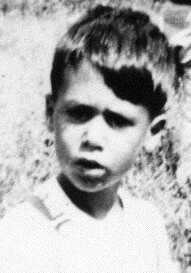Shutting the windows
The windows are dirty and leaky. In late October they leak cold air. Damp air too, since it’s raining. The dark wine-red lilies in the vase are mostly wilted. Only one out of nine still looks more like a lily than like a garbage bag stuck to a shrub.
I’m recycling old thoughts, which I often do. These particular thoughts may have begun many years ago while I was discussing modern art with a scientist I worked for. Though he loved art, music in particular, a lot of modern art seemed irrational to him and therefore incomprehensible. At the time, I couldn’t respond articulately. Though I believed that art didn’t have to be rational or “about” anything, I did and still do think of myself as, if not a rationalist with a capital R, still as someone with a strong rational bias. I feel randomness as random, disorder as disorderly, incompleteness as incomplete. It was never simply OK to me that a work of art might not be explainable in a rational way and I felt instinctively that it must be.
The subject came up again years later, this time in the context of another poet’s response to my poems. She wanted to know why they couldn’t be considered to be arbitrary arrangements of unrelated lines. This time I used a scientific analogy in my defense. I stated that like a chaotic system that appears random but that in reality is deterministic, obeying known or knowable laws, a poem might appear to be put together randomly and yet be—let’s say—the (verbal) residue of a process that obeys laws, whether or not those laws are known to the poet.
Still more recently, I gave a seminar on poetry for the scientists among whom I work. It was my first Power Point presentation and I got carried away with collecting images and finding scientific analogues. I organized it in modules with subjects such as words and things, creating meaning, parts and wholes, etc. I called it “Knowing Your Onions: Secrets of Poetry Exposed.”
Things unseen, like air. But you can see “wind” or “breeze” or …
“draft.” I feel a draft. I’m shutting the storm windows only one or two at a time. There’s still hope.
I’m recycling old thoughts, which I often do. These particular thoughts may have begun many years ago while I was discussing modern art with a scientist I worked for. Though he loved art, music in particular, a lot of modern art seemed irrational to him and therefore incomprehensible. At the time, I couldn’t respond articulately. Though I believed that art didn’t have to be rational or “about” anything, I did and still do think of myself as, if not a rationalist with a capital R, still as someone with a strong rational bias. I feel randomness as random, disorder as disorderly, incompleteness as incomplete. It was never simply OK to me that a work of art might not be explainable in a rational way and I felt instinctively that it must be.
The subject came up again years later, this time in the context of another poet’s response to my poems. She wanted to know why they couldn’t be considered to be arbitrary arrangements of unrelated lines. This time I used a scientific analogy in my defense. I stated that like a chaotic system that appears random but that in reality is deterministic, obeying known or knowable laws, a poem might appear to be put together randomly and yet be—let’s say—the (verbal) residue of a process that obeys laws, whether or not those laws are known to the poet.
Still more recently, I gave a seminar on poetry for the scientists among whom I work. It was my first Power Point presentation and I got carried away with collecting images and finding scientific analogues. I organized it in modules with subjects such as words and things, creating meaning, parts and wholes, etc. I called it “Knowing Your Onions: Secrets of Poetry Exposed.”
Things unseen, like air. But you can see “wind” or “breeze” or …
“draft.” I feel a draft. I’m shutting the storm windows only one or two at a time. There’s still hope.


